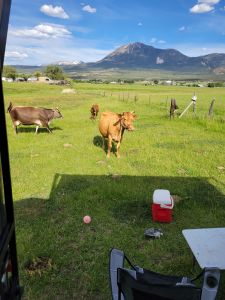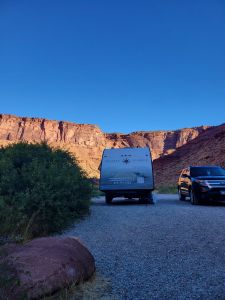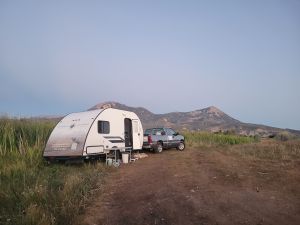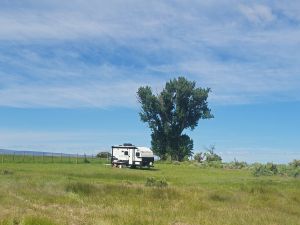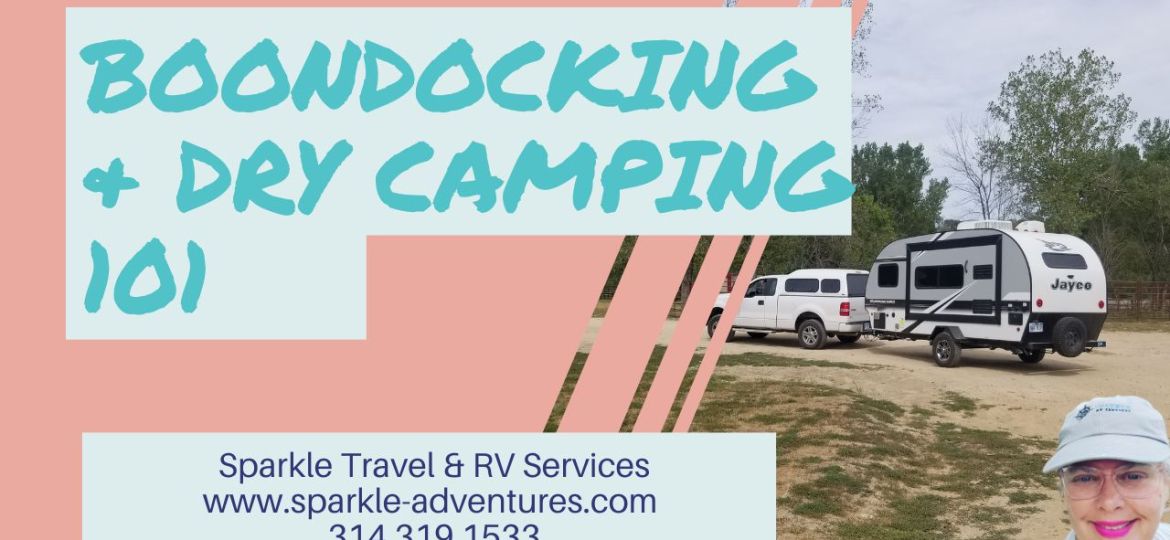
Guide to Boondocking & Dry Camping: What You Need to Know
Boondocking is an exciting way to explore the outdoors, offering more freedom and adventure than traditional campground camping. But what exactly is boondocking? Here’s an in-depth guide to help you understand the basics and prepare for your next off-grid camping experience.
What is Boondocking?
Boondocking refers to camping outside of a developed campground, whether it’s in the remote backcountry or simply pulling over at a highway rest stop. Unlike staying at campgrounds with amenities, boondocking often also means dry camping, so you’ll need to be self-sufficient.
Dry Camping is another term often used to describe boondocking, but there’s a subtle distinction. Dry camping simply means camping without hookups (water, electricity, sewer).
Dry camping can take place at a developed campground and you could have hook ups in your friend’s driveway.
Dispersed Camping refers to camping on public land, such as national forests or Bureau of Land Management (BLM) areas, outside of designated campsites. This is a common form of boondocking in the U.S..
Where to Boondock?
There are many great resources to help you find the perfect boondocking spot:
- RV Lifestyle’s Free and Cheap RV Sites or 75 Favorite Boondocking Destinations by State
- The Dyrt’s Boondocking Guide
- RV Geeks 11 Best Ways to Find RV Boondocking Spots
- Boondockers Welcome and Harvest Host (membership programs offering boondocking on private land)
- Bureau of Land Management (BLM), US Army Corps of Engineers (COEs), National Forests
- Walmart/Cracker Barrel parking lots (some locations allow overnight RV stays)
- Truck Stops & Rest Stops
- Family/Friends Driveway or Curbside
Power When Boondocking
When boondocking, power is a critical component, especially if you’re planning to camp for more than a day or two. Here’s what you need to know about power management.
Power Basics
- Volts (pressure) times Amps (flow) equals Watts (power). Understanding this basic equation can help you figure out how much power you need to generate and store.
Conduct a Power Audit
- Before you set out, it’s helpful to audit your power consumption to know what devices you’ll need to keep running (lights, fans, appliances, etc.).
Generating Power
- Solar Panels: A clean and renewable way to generate power.
- Generators: A more traditional method but often noisy and reliant on fuel.
Storing Power
- Batteries: You’ll need batteries to store power generated from solar panels or your generator.
- Lead Acid or Lithium batteries.
- Battery powered devices
- Inverters: Convert stored power from DC to AC to run household appliances.
Conserving Power
- Turn off appliances when not in use.
- Keeping Cool:
- Close shades or extend awnings.
- Use low-power fans.
- Travel to cooler areas to reduce the need for air conditioning.
- Stay outside or travel during the day to reduce indoor power consumption.
Staying Connected: Internet Options
Boondocking doesn’t have to mean going entirely off-grid when it comes to the internet. Here are some ways to stay connected:
- Mobile Internet Resource Center: A valuable tool for RVers needing internet on the go.
- Wi-Fi Boosters: Devices like Netgear can help amplify weak Wi-Fi signals.
- Satellite Internet: Options like Starlink can provide reliable internet in remote areas.
Water Management for Boondocking
Water is another essential aspect of boondocking. Managing water efficiently is key to extending your stay.
How Much Water Do You Need?
- Generally, you’ll need 1 gallon of fresh water per person per day for drinking. For cooking, cleaning, and bathing, another gallon is usually sufficient. For more detailed info, check out this guide.
Conserving Water
- Don’t skimp on drinking water or waste tank usage.
- Use dish buckets to capture gray water for reuse.
- Take Navy showers or use water-saving showerheads and faucets.
- Reuse water from cooking for drinking water or other purposes.
Refilling Water
- Use water bladders or jugs to store extra water.
- Consider a transfer pump for refilling tanks from an external source.
Managing Waste
Dealing with waste is another important aspect of boondocking. Proper waste management keeps you eco-friendly and hygienic.
Gray Water
- Capture and reuse gray water for things like flushing toilets.
- Shower at facilities when available to reduce gray water buildup.
Black Water
- Use campground facilities for waste disposal when possible.
- Consider investing in a honey wagon to empty tanks into a dump station without moving your RV.
Additional Resources
- We like this list from Do It Yourself RV.
- Check out our article for places to dump your tanks.
- Check out RV Geeks article about boondocking in a class A.


